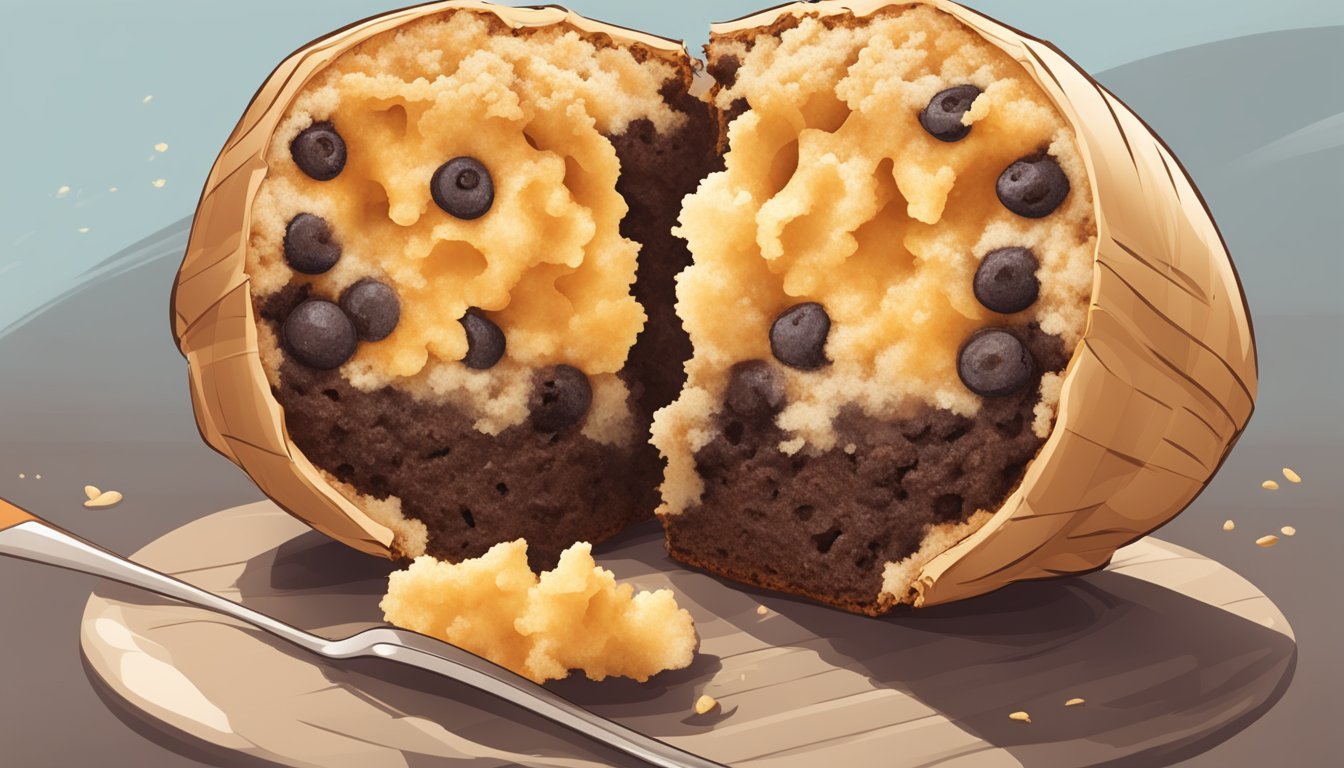Are Muffins Gluten-Free?
Unpacking the Truth about Their Ingredients
Muffins are a popular baked treat enjoyed by people all over the world, but when it comes to gluten-free diets, whether muffins are suitable or not is a common query. Typically, traditional muffins are not gluten-free because they are made with wheat flour, which contains gluten, a protein that gives dough its elasticity and baked goods their characteristic chewy texture. For individuals with celiac disease, gluten intolerance, or those choosing a gluten-free lifestyle, consuming gluten can lead to serious health issues or dietary discomfort.
However, the growing awareness of gluten-related issues has led to the development of gluten-free baking techniques. These methods often involve using alternative flours such as almond flour, rice flour, or a blend specifically formulated to mimic the properties of regular flour. Additionally, adjustments in other ingredients and baking processes are necessary given that gluten-free flour is more absorbent; this includes employing techniques like the spoon and level method for measuring and tweaking the ratios of wet to dry ingredients.
As gluten-free baking continues to evolve, many delicious recipes for gluten-free muffins are becoming readily available, each aiming to achieve a texture and taste comparable to their gluten-containing counterparts. Gluten-free muffins can be made in endless varieties, including classic flavors like blueberry or banana, or more decadent ones like chocolate chip or cinnamon roll. Whether made from scratch at home using carefully selected ingredients or purchased from a bakery specializing in gluten-free products, muffins can indeed be a delightful option for those avoiding gluten.
Understanding Gluten-Free
When considering muffins and other baked goods, a clear distinction is whether they are gluten-free. This distinction revolves around the presence of gluten, a specific type of protein, and the dietary choices individuals make for health or personal reasons.
What Is Gluten?
Gluten is a protein composite found in wheat, barley, rye, and triticale. It gives dough its elasticity, acting as a glue that helps it rise and maintain its shape. Gluten is also responsible for the chewy texture commonly associated with baked goods.
Benefits of a Gluten-Free Diet
A gluten-free diet is essential for individuals with celiac disease or gluten sensitivity, as consuming gluten can lead to severe health issues for them. Eliminating gluten can prevent the symptoms associated with these conditions, which include gastrointestinal distress, headaches, and fatigue. For those without gluten intolerance, the benefits of a gluten-free diet are debated. Some people report feeling more energetic and experiencing less bloating, though these claims vary and are often anecdotal rather than scientifically proven.
Fundamentals of Gluten-Free Muffin Ingredients
Selecting the right ingredients is essential for crafting a delicious gluten-free muffin. Ingredients must be carefully considered to replicate the texture and structure typically provided by gluten in traditional baking.
Selecting Gluten-Free Flours
The foundation of gluten-free baking lies in the choice of flour. Gluten-free flours such as brown rice flour, almond flour, oat flour, rice flour, and coconut flour are popular options. Each flour offers a different flavor, texture, and nutritional profile. For example, almond flour adds a nutty taste and is rich in protein, while coconut flour is highly absorbent and lends a slight sweetness to baked goods. A gluten-free flour blend, like Bob’s Red Mill, can provide a balanced flavor and texture, with ingredients like sweet rice and brown rice flour, potato starch, sorghum flour, tapioca flour, and sometimes xanthan gum.
Brown Rice Flour: Neutral flavor, rich in fiber
Almond Flour: Nutty flavor, high in protein and fat
Oat Flour: Sweet and mild flavor, adds chewiness
Rice Flour: Light texture, neutral flavor
Coconut Flour: Highly absorbent, sweet taste
Role of Xanthan Gum in Baking
Xanthan gum is a critical ingredient for gluten-free baking, acting as a substitute for gluten. It helps to bind the mixture, providing elasticity and structure to the muffins. A small amount of xanthan gum can prevent the baked muffins from crumbling and mimics the chewy texture that gluten imparts to traditional baked goods. It is usually included in pre-made gluten-free flour blends but can also be purchased separately to add to individual flour varieties.
Gluten-Free Leavening Agents
Leavening agents like baking powder and baking soda are necessary to achieve the desirable rise in gluten-free muffins. They release gases, causing the batter to expand, and help in providing a soft and light crumb to the muffins.
Baking Powder: Typically used in recipes that do not have a natural acid, it consists of baking soda combined with a dry acid.
Baking Soda: Often used with natural acidic ingredients like lemon juice or buttermilk, it helps the batter to rise quickly.
Remember, when measuring gluten-free flours or leavening agents, precise measurements are essential to ensure the right chemical reactions and to avoid altering the texture of the final product.
Muffin Preparation Techniques
When preparing gluten-free muffins, one must pay close attention to the mixing methods to maintain texture and flavor, as well as to oven settings for an even bake.
Mixing Methods for Gluten-Free Muffins
Gluten-free muffin mixes require a delicate balance to avoid a gritty or crumbly texture. The mix-ins should be prepared before beginning the mix to ensure an even distribution. For instance, if using fruit or chocolate chips, coat them lightly with a bit of the gluten-free flour to prevent them from sinking to the bottom. When combining the wet and dry ingredients, they should be mixed until just incorporated, avoiding overmixing which can introduce too much air and affect the final structure.
Baking Tips and Oven Settings
The oven should be pre-heated properly, often to a higher temperature such as 425°F (220°C), then reduced once the muffins are in to allow a rise with a good crust formation. Gluten-free muffins typically bake well in a lined muffin pan with the batter filled just below the top to allow for expansion. For a crisp exterior, one could utilize a skillet to briefly cook the muffin base before baking. Monitor the muffins closely and perform a toothpick test for doneness. A toothpick inserted in the center should come out clean. If making English muffins, gluten-free dough benefits from resting on a cornmeal-dusted surface and being cooked in a pre-heated, greased skillet over medium heat, ensuring the insides are cooked through without burning the exterior.
Gluten-Free Muffin Recipes
Exploring gluten-free muffin recipes showcases the diverse options available for those who avoid gluten. Using gluten-free flours and carefully selected ingredients, one can recreate beloved classics and enjoy a variety of flavors—from fruity to chocolatey to savory.
Classic Gluten-Free Blueberry Muffins
For gluten-free blueberry muffins, one requires a mix of gluten-free flour, baking powder, a pinch of salt, and xanthan gum if the flour blend doesn't include it. Blueberries can be fresh or frozen, but they should be coated with a bit of flour to prevent sinking. This classic recipe aims to replicate the fluffy texture and sweet taste of traditional blueberry muffins.
Ingredients:
Gluten-free flour blend
Blueberries
Eggs, butter, and sugar
Baking powder and xanthan gum (if needed)
Chocolate Chip Muffins Without Gluten
Creating delicious chocolate chip muffins without gluten involves substituting regular flour with a gluten-free blend and adding xanthan gum for structure. Use quality gluten-free chocolate chips and ensure all other ingredients, such as vanilla extract and baking powder, are gluten-free.
Key Components:
Gluten-free flour blend
Gluten-free chocolate chips
Xanthan gum (for texture)
Savory Muffin Variations
Savory muffin variations present a delightful change to the sweet options. Consider recipes for gluten-free carrot muffins or sweet potato muffins. For these, one can incorporate grated vegetables, cheese, and herbs. These recipes often use a blend of white and whole-grain gluten-free flours to achieve a heartier texture.
Ingredients Variety:
Grated vegetables (carrots or sweet potatoes)
Cheese (optional)
Herbs such as rosemary or thyme
Gluten-free whole-grain flour blend
Customizing Gluten-Free Muffins
Customizing gluten-free muffins is straightforward when one understands the appropriate substitutes and additions that maintain the integrity of the muffins while enhancing flavor and texture.
Incorporating Fruits and Nuts
Fruits and nuts add both texture and nutritional value to gluten-free muffins. For instance:
Fruits: Fresh or frozen fruits like blueberries, strawberries, and raspberries can be folded gently into the batter to prevent bleeding. Dried fruits like apple or sweet potato muffins must be chopped finely to ensure even distribution.
Nuts and Seeds: Chopped nuts such as almonds or walnuts and seeds like chia seeds contribute to a satisfying crunch. To preserve their texture, add them last to the mix.
Sweeteners and Flavor Enhancers
The choice of sweeteners and flavor enhancers can greatly affect the taste and texture of gluten-free muffins:
Sweeteners: Honey, raw sugar, and granulated sugar can be used to sweeten muffins. The choice between them will depend on the desired flavor and sweetness level.
Flavor Enhancers: Pure vanilla extract, lemon juice, lemon zest, and ground cinnamon can be added to create a depth of flavor. One should add these to the wet ingredients to ensure they are well incorporated.
Creating Vegan and Dairy-Free Options
Making gluten-free muffins vegan or dairy-free requires careful replacement of certain ingredients:
Milk Alternatives: Use almond milk, coconut milk, or soy milk in place of whole milk to create a dairy-free version.
Replacing Eggs: Chia seeds or flaxseeds soaked in water can be used as a binding agent to replace eggs in vegan muffin recipes.
Vegan Substitutes: Coconut oil can replace butter, and dairy-free yogurt like coconut or almond yogurt can substitute for Greek yogurt in recipes.
Texture and Consistency in Gluten-Free Muffins
Creating the perfect texture and consistency in gluten-free muffins is achievable by understanding the role specific ingredients play in the baking process, and by using techniques tailored for gluten-free baking.
Achieving a Moist Crumb
To obtain a moist crumb in gluten-free muffins, bakers often rely on certain ingredients. Eggs are pivotal; they provide structure and moisture. Buttermilk also plays a crucial role due to its acidity, which can help with leavening and contribute to a tender texture. When it comes to fats, options like unsalted butter or oil can help to add moisture. Using a balance of these ingredients can lead to a muffin that is moist without being overly wet.
Additionally, mix-ins of choice, such as fruits or nuts, can alter the crumb's texture. For instance, blueberries can add bursts of juiciness, while nuts give a satisfying crunch. The careful folding of these ingredients is essential to distribute moisture and flavors evenly without overmixing, which can lead to density issues.
Avoiding Common Pitfalls of Density
A common challenge with gluten-free muffins is avoiding a dense texture. The right choice of starch plays a significant role—potato starch can contribute to a lighter crumb. Other starches can also be used in combination to mimic the properties of gluten and prevent a heavy, dense outcome.
Another important factor is not to overmix the batter, as this can activate starches and make the muffins tough. Kosher salt or salt, used in the correct quantity, can strengthen the structure of the muffins without contributing to denseness. Lastly, ensure the batter is leavened correctly by using fresh baking powder or baking soda, which will help the muffins rise and become airy rather than compact.
Preserving Gluten-Free Muffins
Gluten-free muffins can remain delicious long after baking when proper storage methods are employed. Optimal preservation requires attention to temperature, humidity, and air exposure.
Storage Tips for Freshness
To maintain the freshness of gluten-free muffins, one should store them in an airtight container. This container can either be placed in a cool, dry pantry or in the refrigerator to extend their shelf life. Muffins stored at room temperature typically last for 1-2 days, while those kept in the refrigerator can last up to a week.
Room Temperature: Store in airtight container; lasts 1-2 days
Refrigerator: Store in airtight container; lasts up to 1 week
When storing muffins, ensure they have cooled completely to avoid moisture buildup which can lead to sogginess. Separating the muffins with parchment paper can also help retain their texture.
Freezing and Reheating Instructions
Freezing gluten-free muffins is an effective way to preserve their wholesomeness for an extended period. By wrapping individual muffins securely in plastic wrap, foil, or placing them in a freezer bag, one can prevent freezer burn and preserve their taste and texture for up to 3 months.
To Freeze:
Cool muffins completely
Wrap individually in cling film or foil
Place in a freezer-safe bag or container
Freeze for up to 3 months
To Reheat:
Thaw overnight in the refrigerator or at room temperature
Warm in a microwave or oven until heated through
When reheating, a microwave can quickly restore the muffin's warmth, whereas an oven or toaster oven can be used to reintroduce a crisp texture to the muffin's exterior. Preheating the oven to 350°F (175°C) and warming the muffins for about 10 minutes is usually sufficient.
Gluten-Free Baking at Home
Adapting to gluten-free baking involves a well-stocked pantry and the know-how to modify existing recipes. With the right ingredients and techniques, creating delectable gluten-free muffins at home is entirely achievable.
Setting Up Your Gluten-Free Pantry
To ensure success in gluten-free baking, one's pantry must contain an array of suitable substitutes for traditional wheat-based flours. Key ingredients include:
Gluten-Free Flour Blends: These are specially formulated to mimic the properties of regular flour. Look for blends that contain a mix of rice flour, potato starch, and binders like xanthan gum, which are essential for texture.
Almond and Coconut Flour: Both are popular for their rich flavors and nutritional benefits. Almond flour adds moisture and tenderness, while coconut flour is highly absorbent and lends a distinct aroma.
Pure Maple Syrup and Oats: For natural sweetness and heartiness, respectively, pure maple syrup and gluten-free oats are excellent additions.
Yeast: Opt for gluten-free yeast when a recipe calls for leavening to help goods rise appropriately.
Complement these with staples like milk (or non-dairy alternatives), baking powder, and baking soda to form the foundation of countless gluten-free creations.
Converting Traditional Recipes to Gluten-Free
Converting beloved muffin recipes to gluten-free versions requires attention to detail and some experimentation. Here's how it's done:
Flour Substitution: Replace wheat flour with a gluten-free flour blend in a 1:1 ratio. For every cup of wheat flour, use a cup of gluten-free flour.
Moisture Balance: Since gluten-free flours absorb liquids differently, minor adjustments may be needed. Ingredients like milk or almond milk can help achieve the desired batter consistency.
Structure and Stability: Add a 1/4 teaspoon of xanthan gum per cup of gluten-free flour (unless your blend already includes it) to mimic gluten's structural properties.
Remember, each gluten-free flour possesses unique characteristics, and some trial and error may be involved to perfect your recipe.
Health and Nutrition Considerations
When evaluating gluten-free muffins with regards to health and nutrition, it is important to scrutinize the caloric content and their effects on blood sugar, as well as the incorporation of beneficial fats and proteins that can enhance nutritional value.
Caloric Content and Glycemic Impact
Gluten-free muffins often replace wheat flour with alternatives like almond flour and rice flour, which can significantly alter their caloric content and glycemic index. Almond flour, for instance, is lower in carbohydrates and has a reduced glycemic impact compared to traditional wheat flour, which is beneficial for blood sugar control. While recipes that use high-starch flours like rice or potato flour may lead to a similar or higher glycemic impact than their wheat counterparts.
Almond Flour: Lower in carbs, conducive to blood sugar control.
Rice/Potato Flour: Can have a higher glycemic impact.
Incorporating Healthy Fats and Proteins
An optimal gluten-free muffin recipe should include sources of healthy fats and proteins to round out its nutritional profile. Proteins such as eggs and Greek yogurt add structure in the absence of gluten and contribute essential amino acids, while healthy fats can be incorporated through ingredients like coconut oil, seeds, and chia seeds. These fats are not only important for satiety but also for the absorption of fat-soluble vitamins.
Healthy Fats:
Coconut Oil: Provides medium-chain triglycerides (MCTs).
Seeds/Chia Seeds: Offer omega-3 fatty acids.
Proteins:
Eggs: Offer complete protein and bind ingredients.
Greek Yogurt: Adds protein and creates a moist texture.
Beyond Muffins: Gluten-Free Breakfast Ideas
When considering gluten-free breakfast options, one must not feel limited to muffins alone. There are a myriad of delicious and satisfying choices that cater to a gluten-free diet, ranging from sweet treats to savory classics.
Alternative Gluten-Free Morning Treats
Gluten-free breakfasts can be as diverse as any traditional breakfast menu. For those with a sweet tooth, a gluten-free blueberry muffin is a classic go-to. However, for variety, one can explore options like pancakes made with almond or coconut flour, which can be just as fluffy and delightful as their wheat-based counterparts. Another choice is indulging in a warm bowl of gluten-free oatmeal, topped with fruit and a drizzle of honey or maple syrup for natural sweetness.
Those preferring savory options can delight in gluten-free English muffins loaded with their favorite toppings. They can enjoy a gluten-free twist on the traditional eggs Benedict, with toasted gluten-free English muffins, poached eggs, and homemade Hollandaise sauce, ensuring an indulgent yet gluten-free start to the day.
Sweet Alternatives:
Gluten-free pancakes
Gluten-free oatmeal with toppings
Gluten-free waffles
Savory Alternatives:
Gluten-free English muffins
Gluten-free eggs Benedict
Innovative Uses for Muffin Recipes
The versatility of gluten-free muffins extends beyond traditional flavors like blueberry or chocolate chip. Gluten-free muffin recipes can be adapted to serve as a base for more creative dishes. Mini frittatas, made in a muffin tin using eggs, vegetables, and cheese, are a savory, high-protein choice that can also utilize gluten-free flour blends to bind the ingredients.
Additionally, one can repurpose muffin batter into miniature quiches or breakfast pies, with fillings such as spinach, mushrooms, bacon, or feta for a portable and customizable breakfast option. These innovative uses of muffin recipes not only diversify breakfast menus but also provide nutritious and convenient meals for those on a gluten-free diet.
Savory Muffin Innovations:
Mini frittatas
Gluten-free quiche muffins
Breakfast pies with various fillings










